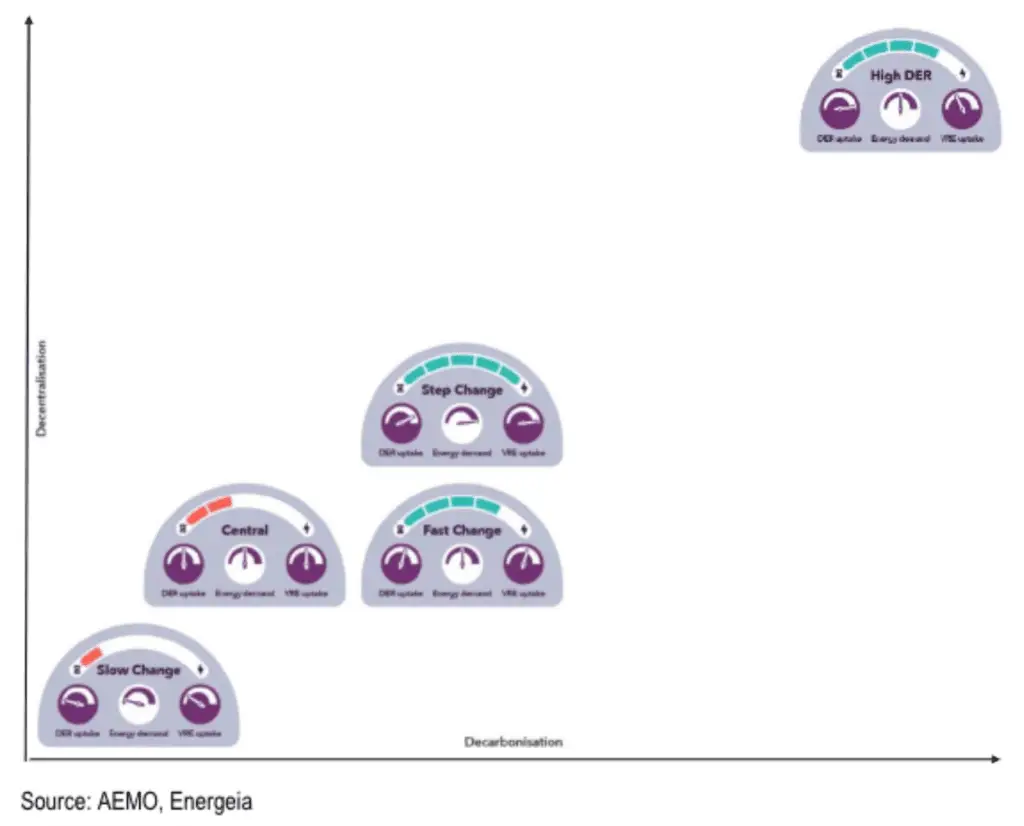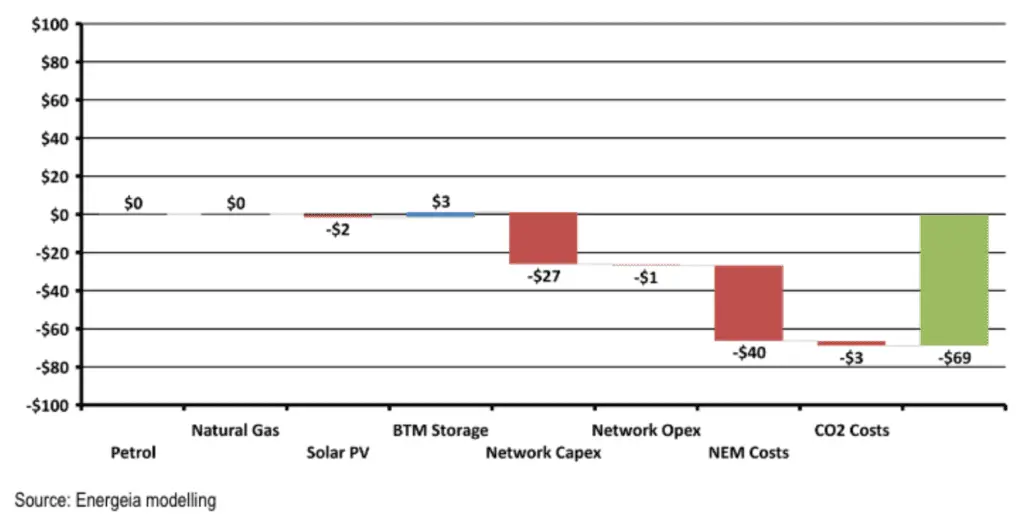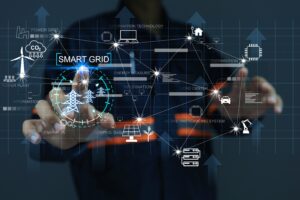- Webinars
The Benefits of a Consumer Led Energy System
The latest update to the Australian Energy Market Operator’s Integrated System Plan (ISP) draws the unsurprising conclusion that our energy system is hurtling towards its Step Change Scenario.
This faster transition of the nation’s energy sector includes higher uptake of cheap, large-scale renewables and storage as well as consumer-led behind the meter sources of distributed energy resources – solar, home batteries, electric vehicle charging and Virtual Power Plant orchestration.
It’s now one of four scenarios attempting to predict what the electricity system of the future will look like so governments, the private sector and the grid operator can plan and invest now and build a fit for purpose energy system.
Their whole-of-system model and engagement used for the ISP is robust and detailed – but is it designed to imagine a more consumer focused energy future?
It’s all in the modeling
Energeia was asked to do just this – use our end-to-end modelling to develop a consumer focused high DER and low carbon scenario – and compare it to scenarios developed by and for the energy market such as the ISP and the Network Transformation Roadmap produced by Energy Networks Australia (ENA).
The work was commissioned by Renew – a community-based member organisation that advocates for consumer interests in energy market policy and funded by Energy Consumer Australia as the peak body supporting energy consumers and groups across Australia.
Let’s go straight to the ending – the findings show that when you open your view to household data, gas and the low voltage distribution network, a new picture starts to emerge.
Higher uptakes of solar and batteries occur, albeit later for a whole host of reasons, optimal system sizes change and there’s much larger involvement in behind the meter orchestration via VPPs.
Download the full report here.
Energeia’s consumer focused high DER outcome
It is a future where energy systems sitting on the consumer side of the network play a much more active role in helping to shape demand and supply.

It’s another large step away from the AEMO Step Change Scenario – and we can see it because of holistic, end-to-end modelling.
Energeia’s consumer focused high DER outcome vs. AEMO’s ISP scenarios
To understand what an optimised future state for all customers could look like, Energeia ran its customer, grid and generation models to identify the least cost mix of DER, network and generation over time.
Like AEMO and the ENA, we looked upstream at the wholesale, and high voltage systems. But to get a more complete picture, we included downstream customer data, including electricity and gas, assumptions on the electrification of transport systems and data from low voltage distribution networks.
Other differences included assumptions regarding future prices for distributed solar PV and battery storage technology, VPP enrolment levels and the distribution network long run marginal costs.
The findings are far reaching, but in nutshell, a more holistic approach to data and modelling opens our eyes to an energy future that favours the consumer – both in participation and cost.
A more optimised DER adoption reduces long-run generation and network capacity requirements by 20% and wholesale supplied energy by 40%, compared to the ISP Step Change Scenario.

This holistic, end-to-end modelling paints a very clear picture of an energy future led by the consumer. If this is the case, it’s perhaps time we looked at the barriers that need pulling down to help it flourish.
Afterall, a sustainable least cost outcome is at the heart of our whole National Electricity Framework.
Download the full report here.
You may also like

The Balance of Ancillary Services Pricing
FCAS exist to provide AEMO with operational reserves in case of unplanned variations in demand and supply to keep demand and supply of electricity in

Energeia Assists AEMC on Potential Rule Change
The Australian Energy Market Commission (AEMC) has proposed draft rules aimed at transforming how power companies and consumers interact.

State of the Art in Virtual Power Plants (VPPs)
Electrification of appliances and transport will radically change the optimal grid and bulk system configurations. What is a solution for managing all these resources without
